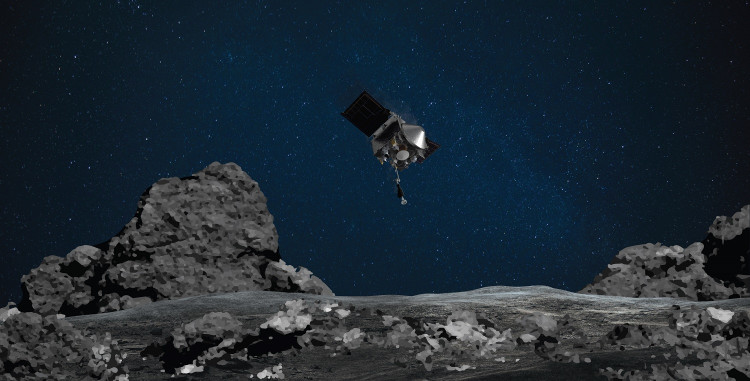According to data from NASA's OSIRIS-REx mission, it seems that parts of asteroid Vesta ended up on asteroid Bennu. The latest finding sheds light on asteroids' complex orbital dance and on Bennu's formation, which is an asteroid "rubble pile," which coalesced from the pieces of a major collision.
"We found six boulders ranging in size from 5 to 14 feet scattered across Bennu's southern hemisphere and near the equator," said Daniella DellaGiustina of the University of Arizona's Lunar & Planetary Laboratory.
"Our leading hypothesis is that Bennu inherited this material from its parent asteroid after a vestoid (a fragment from Vesta) struck the parent," said Hannah Kaplan of NASA's Goddard Space Flight Center.
DellaGiustina and Kaplan serve as key authors of this study published in Nature Astronomy.
In images from the OSIRIS-REx (Origins, Spectral Interpretation, Resource Identification, Security-Regolith Explorer) Camera Suite (OCAMS), the odd boulders on Bennu first caught the team's eye. They seemed to be incredibly bright, some almost ten times brighter than their environment.
Using the OSIRIS-REx Visible and Infrared Spectrometer (OVIRS) device to get clues to their structure, they studied the light from the boulders. Light is divided into its component colors by a spectrometer. Since elements and compounds have distinct, bright, and dark signature patterns across a variety of colors, a spectrometer may be used to classify them.
The signature from the blocks was indicative of mineral pyroxene, as seen on Vesta and vestoids, smaller asteroids that are essentially, fragments that burst from Vesta when it received blows.
It is not uncommon for an asteroid to have debris from another asteroid splashed over the surface, observations show. Their orbits can be changed in many ways as asteroids pass around the solar system, including the pull of gravity from planets and other objects, meteoroid collisions, and also the minor pressure from sunlight. The latest result helps narrow down the complicated path through the solar system that Bennu and other asteroids have traced.
Based on its trajectory, multiple studies suggest that Bennu was transported by a well-known gravitational mechanism from the inner portion of the Main Asteroid Belt that can carry objects to near-Earth orbits from the inner Main Belt.
There are two asteroid families within the Main Belt (Polan and Eulalia) looking like Bennu: dark and carbon-rich, that make them candidates for Bennu's parent. The formation of vestoids is likewise related to the formation, roughly two billion years ago and about one milliard year ago, of the Venseneia and Rheasilvia impact basins on Vesta.
In October, OSIRIS-REx is going to make the first attempt to sample Bennu and return it for a comprehensive study on Earth in 2023. Before making a final selection in December 2019, the research team closely inspected four possible sample sites on Bennu to assess their safety and science merit. In the photos from these close-up studies, DellaGiustina and Kaplan's team think they could find smaller fragments of Vesta.





